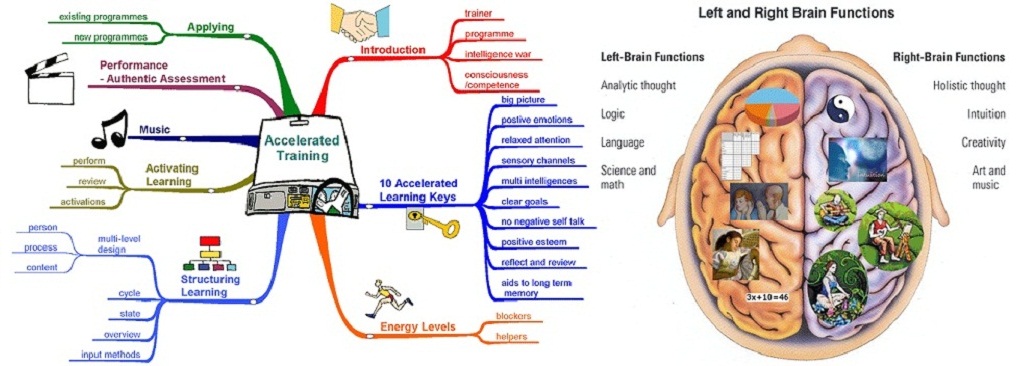What is Accelerated Learning?
You see colorful posters on the walls. Music is playing. You find participants working in groups, playing memory or a board game to learn the materials of their content area. Or, perhaps, participants are developing a skit, creating learning activities to teach other groups, putting together magazine cut-outs to make a collage to demonstrate good customer service.
You are in a learning program using Accelerated Learning, and Accelerated Learning is more than just the inclusion of music and the arts, more than playing learning games that are effective and fun, even more than designing learning to appeal to all learning styles. It is a method that begins with the premise that each person is capable of much, much more than they think is possible. AL assumes that our own limiting beliefs about ourselves, our abilities and learning itself often get in the way of our learning potential. In an AL classroom, the facilitator creates multiple opportunities for individual and group experiences that enable participants to move beyond those limiting beliefs and tap into their inner wisdom, their hidden potential. The facilitator, the learning environment and the design of the learning process are key determining factors in the success of learning and the development of the capacity to learn.
The Facilitator
AL facilitators change roles easily to support learning. They can be actors/actresses on stage, great story-tellers and entertainers, and then, as easily take a step back and hand over the stage to the learners, support them in discovering their own answers, guide them in developing new questions and help them mastering the learning through experimentation and carefully orchestrated practice sessions.
To guide the learning process successfully, AL facilitators are trained to see, hear, and feel more of what is happening in the group. They develop sensory acuity or heightened observation skills and can use language and positive suggestion to support learning and development. In fact, the AL facilitator is so important that the training to become an IAL certified facilitator places equal importance on personal mastery and growth and to the development of the skills to use the tools of AL effectively.
The Learning Environment
The Learning Design
In the preparation stages, the AL design involves finding out what the limiting beliefs or suggestions of learners might be, and then carefully creating activities and an environment that de-suggests or helps learner move beyond their limiting mental models and expand their perspectives. During the learning process, the aware facilitator revises the design as needed, and creates possibilities to support the creation of new and empowering beliefs and mindsets.
